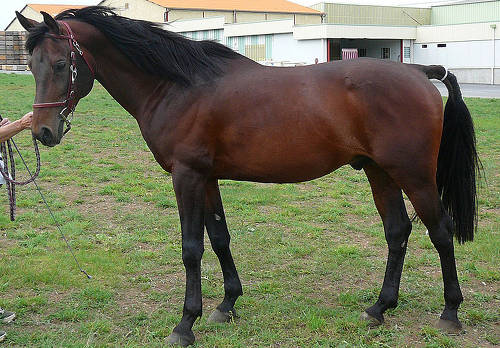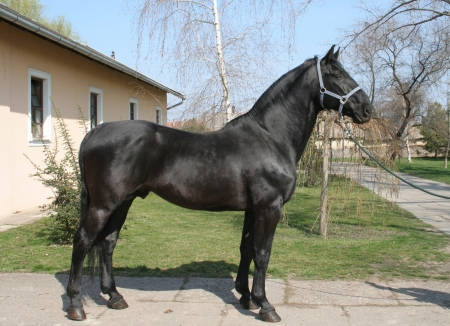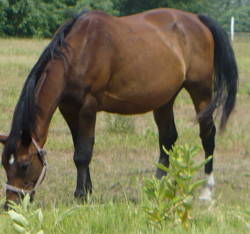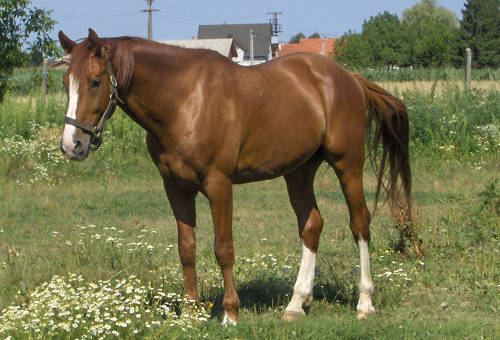
Intro
The Shagya Arabian comes from Hungary and was established during the Turkish occupation of Hungary that lasted until the end of the 17th century.
(more…)

The Shagya Arabian comes from Hungary and was established during the Turkish occupation of Hungary that lasted until the end of the 17th century.
(more…)

The Nonius comes from Hungary and this breed can all trace their lineage back to one flagship stallion, an Anglo-Norman stallion by the name of Nonius Senior.
(more…)

Also called the Mur Island Medjimurski, Murakoz & the Murakosi, the Mura was once quite a popular working horse in Hungary, however today their numbers are very low.
(more…)

The Mezohegyes Sport Horse comes from the Mezohegyes and a breed of relatively recent origins. They are primarily a cross between Hanoverian, Holstein & English Thoroughbred, however warmbloods from Germany, Holland, Belgium & France made contributions as well.
(more…)

Also called the Leutstettener, the Leutstetten breed comes from Hungary. Breeding began early in the 19th century in an attempt to improve the local native animals. Breeding was taken seriously and very systematic & there are accurate stud books that date back to 1816.
(more…)

Also called the Kisber Felver, the Kisber Halfbred was developed at the Kisber Stud Farm (est. 1853) in Hungary. The goal was to replace the often high strung English Thoroughbred with an animal that was more versatile to upgrade local stock.
(more…)

The Hungarian Horse can be traced back to the original people that settled the Carpathian basin 1,000 years ago called the Magyars. They were nomadic steppe people and descendants of the Huns so they carried a strong horse culture.
(more…)

In 1971 the Hungarian Ministry of Agriculture & Nutrition decided they were going to preserve all of the native Hungarian breeds of livestock. One of the goals was to reestablish the aboriginal dun horse.
(more…)

There is not a coldblooded horse native to Hungary, however during the 18th century draft animals were brought with them. These larger & more robust animals were particularly valuable to a land filled with lighter animals and were often traded for. These animals became known as the Hungarian Coldblood, Magyar Hidegveru and Hungarian Draft.
(more…)

The Gidran is a Hungarian Anglo-Arabian breed that comes from a combination of Arabian & Thoroughbred bloodlines.
The flagship of the breed was a chestnut stud named Siglavy Gidran who was imported to Hungary from Arabia in 1814. His son was later brought to the royal stud farm to be used as a breeding stallion. During this time it was fashionable to separate animals based on their color so similar teams could be put together. By 1850, the chestnut animals were primarily Gidran bred animals, however they were not bred to preserve Gidran’s characteristics until some time later.
In an attempt to improve some of the breed’s faults English Thoroughbred blood was added which resulted in temperamental animals so Arabian and Kisber blood was added. By 1943 the Gidran breed was separated into 3 strains, A, B & C.
In 1958 the remaining stock was moved from the royal stud and further reduced until 1977 when a new breeding initiative took off. Today there are two types of Gidran, a smaller saddle type and a more robust harness horse. Their numbers are quite low and the primary focus of breeding is preserving the genepool.
Average height 15.3 – 17 hands (minimum size 15.2)
Head is small & well set
Neck is slightly arched & muscular
Back is tight
Shoulder is muscular and sloped
Legs are well muscled with strong joints
Feet have good shape & hardness
Primarily chestnut
Have a history of bad tempers but generally sound individuals.
Light farming
Harness work
Riding horse